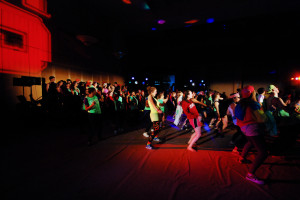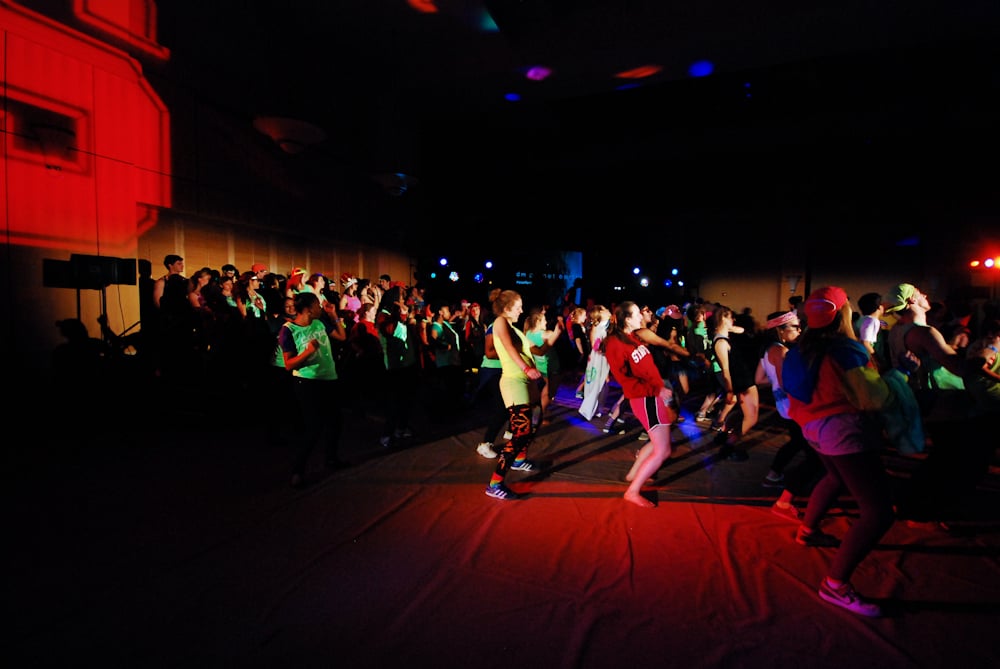Stanford’s ninth annual Dance Marathon raised just over $60,000 to combat the global H.I.V./AIDS epidemic, with almost 1,500 students dancing in shifts from 1 p.m. on Saturday to 1 p.m. on Sunday.

The event’s fundraising total is similar to last year’s total of $60,085.97, which was itself a decrease from the $65,075.50 raised in 2011. However, a larger portion of this year’s tally came from dancer fundraising than last year, as roughly $60,000 came from dancers or walk-in attendees this year compared with $42,000 last year.
Last year, Dance Marathon’s partner organization Code the Change (CTC) accounted for $13,000 of the donations. This year, CTC was only responsible for $2,000 of the final fundraising total.
Dance Marathon directors were encouraged by the fact that they were able to raise more money through student fundraising. According to Co-Director Abigail Andrews ’13, Dance Marathon chose to shift away from relying on CTC and attempt to raise a greater percentage of the funds through individual dancers in order to ensure the long-term independent sustainability of the organization.
Dance Marathon was founded in 2005 and is held annually at the Arrillaga Alumni Center. Co-Director Elise Geithner ’13 estimated that 30 dancers and 25 staff members stayed for the entire 24 hours, saying that an “amazing chunk of people” danced for 15 to 20 hours.
“The energy is incredible,” Geithner said. “It seemed like the people who were here really knew why they were here. It has been incredible.”
According to Andrews, the four directors restructured several aspects of the event this year, including marketing, recruitment of dancers and catering.
Some of the most significant changes were made to fundraising policies. For the first time, Dance Marathon used the online fundraising platform HobKnob, which gave dancers the opportunity to send out mass emails and make Facebook posts requesting donations from their acquaintances.
“We’ve never had that before,” Geithner said about the ability to fundraise online. “It was so nice not to rely on checks and snail-mail.”
The event’s directors also reconsidered their strategy for seeking corporate donations.
“We decided to shift away from relying on personal connections to big companies in order to secure big donation checks,” Andrews said. “If we build corporate sponsorships that are much more based around what we do rather than transient partnerships based on personal connections, it will be more sustainable in the long run for the organization.”
Each dancer was asked to raise $192 and dancers were given fundraising suggestions from the directors. Some dancers relied on more traditional fundraising methods like bake sales and doing chores for dormmates in exchange for donations, while others offered henna tattoos or taught yoga.
Geithner said that an additional $2,000 to $3,000 was raised at the door during the event through “gentle heckling” of event attendees.
“We were pretty aggressive in terms of a suggested donation of $10. People were throwing us tons of money, from change to $100 bills,” Geithner said.
Before 2011, Dance Marathon consistently raised larger sums, with matching donations by FACE AIDS leading to total sums of $178,000 in 2010 and $130,000 in 2009. According to Andrews, FACE AIDS discontinued that arrangement due to the difficulty of matching the funds raised by Dance Marathon.
The directors also revamped the event’s marketing structure in order to attract more students to the event, utilizing social media and creating promotional videos featuring the football team and other student groups. However, both Andrews and Geithner said that the directors were more concerned with keeping dancers at the event than with registering a large number of students.
Students who could not commit to 24 hours of dancing could register to be “moralers.” Moralers, who were expected to raise $60 each, had three-hour dance shifts and learned a special morale dance to keep other dancers energized.
Nicole Gurtler ’16 registered as a dancer, but decided to participate for a few hours instead of the full day. Gurtler said that, although she did not stay for the entire event, she was impressed by the support made available to dancers by event organizers.
“The people who organized the event were super motivated and passionate about it, and that was awesome to see,” Gurtler said. “It definitely helped everyone else get in the mood.”
Gurtler attended the event with Tammy Chin Loy ’16, who said that she was pleased with the event’s snack selection. According to Andrews, the directors “aggressively pursued” more diverse food options this year, changing their catering and food donation policies to accommodate participants with gluten-free diets and other dietary restrictions.
“This is something we’ve never done in the past and we felt it was very important,” Andrews said. “We also focused on providing healthier food to get the dancers through the 24 hours.”
Though the event did not reach this year’s fundraising goal of $100,000, Andrews predicted that the time-intensive process of building relationships with new corporate sponsors would eventually pay off.
“We anticipated that this year we would take a hit in fundraising, but we feel its much more in the long-term interests of the organization to pursue that strategy,” she said.
